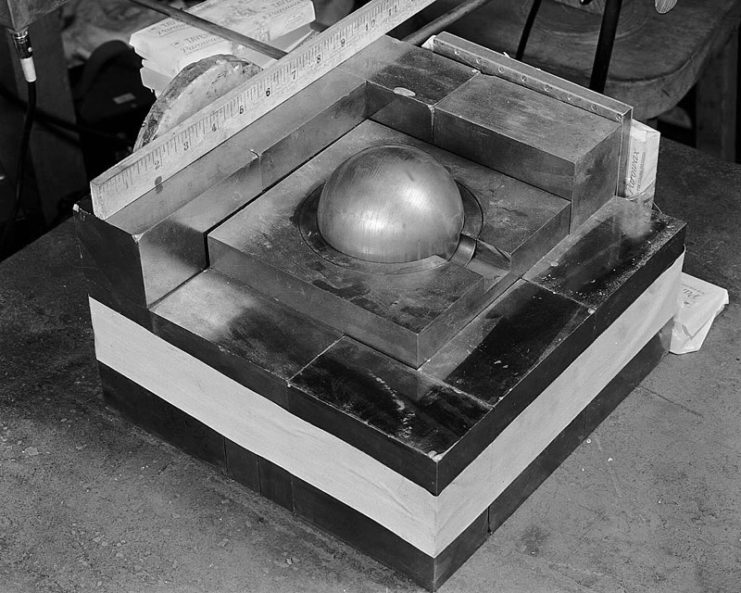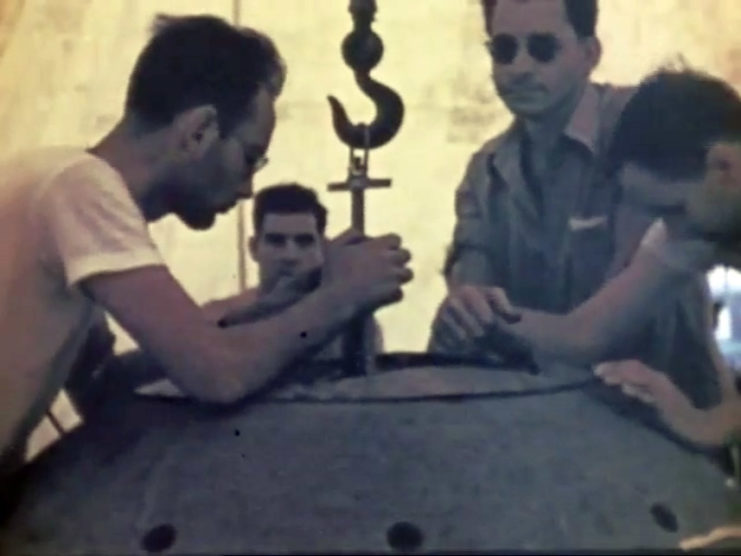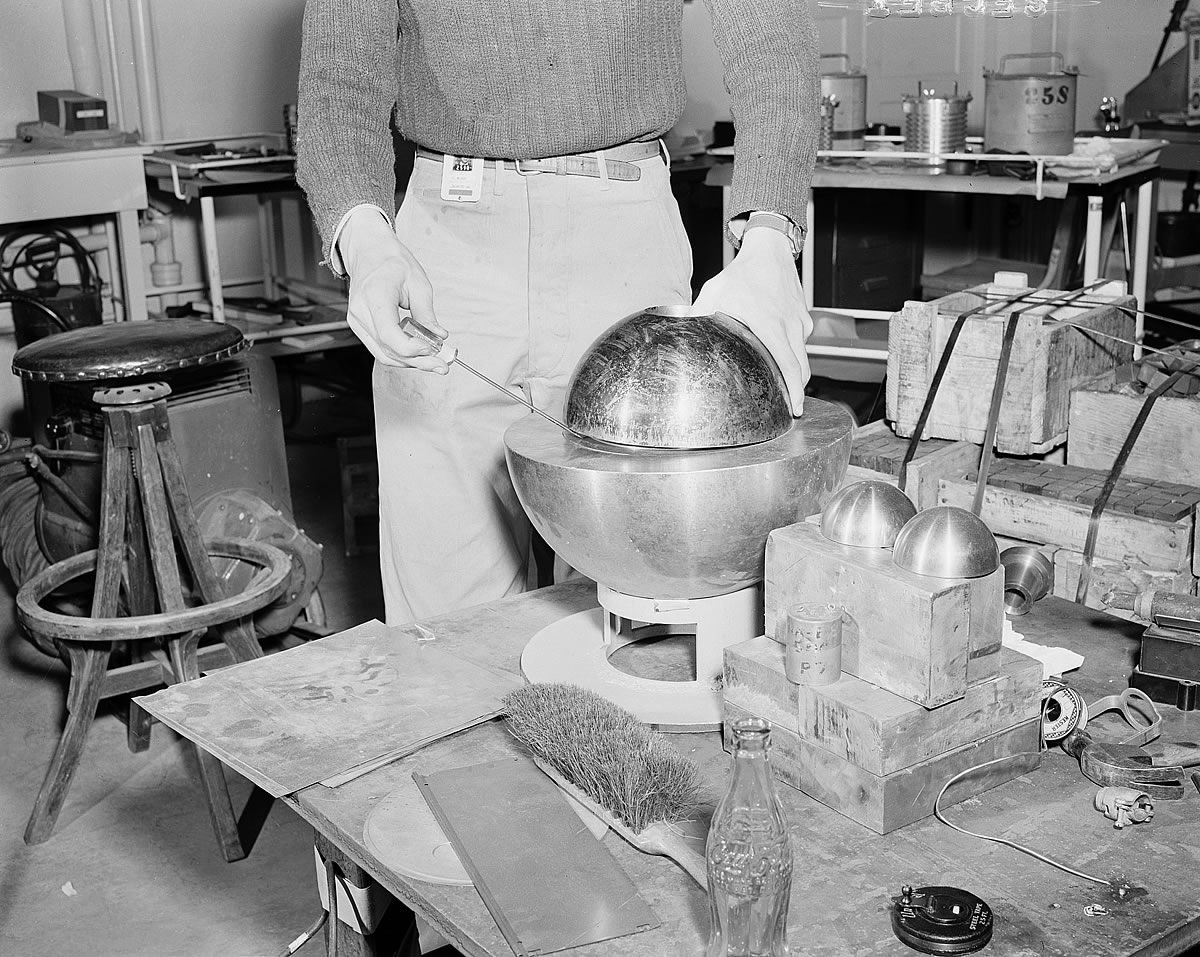In August 1945 the United States dropped two atomic bombs on two Japanese cities. These bombings remain the only time nuclear weapons have ever been used in a conflict. The two bombs caused immense devastation, but there was actually meant to be a third bomb. Fortunately, Japan surrendered just days before the bomb was going to be used, sparing tens of thousands of lives. However, while this bomb didn’t claim any lives, its plutonium core did, killing two US physicists, earning it the name “demon core.”
The third bomb

It’s easy to assume that the plan all along was for the Manhattan Project, the unfathomably large US program to design and produce atomic weapons, to only build two atomic bombs. But this is not the case. The project had grown into a fully-fledged atomic weapon production line. Most of the resources used in the multi-billion dollar operation went towards gathering enriched uranium and plutonium, which was exceptionally hard to produce at the time.
By the summer of 1945, the project had produced enough fuel to complete three bombs, with a fourth on the way. This fuel would be used in the Trinity test, the Little Boy bomb, and the Fat Man bomb.
Japan did not surrender immediately after the two bombs were dropped, prompting the US to prepare a third bomb. This bomb would have been dropped on August 19. Japan surrendered on August 16.
At the time, few people on the Manhattan Project expected so few bombs to be dropped. Many thought that many more would be needed just to force Japan to surrender, and even if they did surrender, there were fears that the war could easily start back up again.
The third bomb was not used, leaving the US with its 6.2 kg 9 cm wide plutonium core. The core was repurposed for testing.
The demon core

The core from the bomb was used for experiments throughout 1945 and 1946. As it was intended for a bomb, the plutonium sphere had an extremely slim safety margin before it became supercritical. Naturally, these margins would be pushed.
One of the many experiments conducted on the core focused on its criticality (when a fissionable material sustains or is able to sustain a nuclear chain reaction). In these experiments, scientists partially surrounded the core with neutron reflectors, which reflected neutrons from the nuclear fission reaction back into the core, increasing the reaction further.
If the core was completely surrounded by neutron reflectors, it would rapidly enter super criticality, releasing a powerful flash of radiation.
The terrifyingly relaxed safety standards of the day meant scientists would conduct these experiments by hand.
Physicist Harry Daghlian was performing this experiment in 1945 when it went fatally wrong. He was placing neutron-reflecting tungsten carbide blocks around the core to bring it closer to criticality when he accidentally dropped one of the blocks onto the core. Daghlian removed the block as fast as he could but it was too late. In that brief moment, the core entered super criticality and released a lethal amount of radiation.
Daghlian spent the next three weeks battling radiation sickness before finally passing away. After Daghlian’s death, much stricter safety protocols were brought in to prevent it from happening again.
The following year one of Daghlian’s colleagues, Louis Slotin, took over the experiments. Slotin was a brilliant physicist but was known to disregard safety.
Slotin’s experiments with the core were similar to Daghlian’s but this time two half-sphere neutron reflectors would be slowly closed around the core to increase the core’s activity. However, to prevent another accident, metal spacers were placed between the half spheres to stop them from enclosing the core fully.
Quite the risk-taker, Slotin ignored the protocol and did away with the spacers, using his own method instead. His method was faster but was also much more dangerous. Slotin would use a simple flathead screwdriver to maintain the gap between the reflectors, adjusting it by hand as necessary. He became quite proficient at this technique and became known among his colleagues for “tickling the dragon’s tail,” as it was called at the time.
Slotin’s colleagues were aware that this technique was extremely risky, and even tried to warn him, but he continued anyway.
On May 21, 1946, Slotin was performing the experiment in front of a small group of people in a Los Alamos laboratory. Using his usual technique, he lowered the two neutron reflecting half-spheres around the core, using the screwdriver to keep them from fully closing.
However, on this occasion, the screwdriver slipped by a tiny amount, allowing the two neutron reflectors to completely enclose the core. The core immediately entered super criticality, emitting a bright blue flash of light and a powerful blast of radiation.
Slotin quickly removed the neutron reflectors, but like Daghlian, the damage was already done. He had been showered by an extremely high dose of radiation. As he was leaning over the core at the moment the accident happened, he absorbed much of the radiation, likely saving the lives of the others in the room.
More From Us: Did The US Government Ever Plan to Use The Atomic Bomb on Germany?
Within minutes of the accident, Slotin was already showing signs of radiation poisoning. He died just 9 days later.
After the plutonium sphere claimed two lives, it became known as the “demon core.” It was meant to be used Operation Crossroads nuclear tests, but this never happened and it was eventually melted down and recycled into other cores.
